Psoas Major Muscle
What is Psoas major muscle?
The psoas major muscle, also known simply as the psoas muscle, is a large muscle that is located in the lower part of the human torso. It is one of the major muscles that make up the hip flexors and is responsible for several important functions in the body.
The psoas muscle originates from the sides of the vertebral bodies of the lumbar spine (L1-L5) and passes through the pelvis to attach to the femur bone in the thigh. Along with the iliacus muscle, it forms the iliopsoas muscle, which is responsible for flexing the hip joint and lifting the leg.
In addition to its role in hip flexion, the psoas muscle is also involved in stabilizing the spine and maintaining good posture. It is also believed to play a role in breathing and digestion.
This muscle joins with the iliacus muscle to make the iliopsoas muscles. The iliacus muscle is frequently paired with the psoas major. As it passes inferolateral into the thigh to insert into the femur, it combines with the iliacus. The iliopsoas muscle is the collective name for these muscles.
The psoas muscle can become tight and strained due to poor posture, sitting for long periods, or injury. This causes lower back pain and hip pain. Stretching and strengthening exercises, as well as massage and other forms of therapy, can help to alleviate these symptoms and improve overall muscle function.
Origin of Psoas Major Muscle
Due to the lumbar plexus branches that run through it, the psoas muscle is considered to have both superficial and deep parts anatomically. The superficial portion extends over the lumbar plexus and originates from the sides of the T12 and L1-L4 vertebrae, including the intervertebral discs that connect them. The transverse processes of lumbar vertebrae L1 to L5 are the source of the deep portion of the lumbar plexus, which is mostly deep to the branches.
Insertion
The fibers of the muscle combine from its wide beginning as they descend on the posterior stomach wall, They cross the pelvic channel/overflow to frame a long ligament, which is joined inside the pelvic area by incalculable fibers from the iliacus muscle, at last inserting into the lesser trochanter of the femur.
Bursa
The iliopsoas bursa is located below the insertional tendinous unit and divides the tendon from the bone surface and the proximal femur.
Fascia
The psoas muscle surrounds the psoas muscle and is responsible for keeping pus in an abscess. Attaching to the vertebrae, the fibrous arches, and the transverse processes, the psoas fascia wraps around the surface of the muscle. It also runs along the pelvic brim, connecting to the iliopubic eminence at the muscle’s margins. Over the quadratus lumborum, the lateral edge blends into the anterior layer of the lumbar fascia.
Fibre Types
The majority of the psoas major muscle fibers in humans are anaerobic, fast oxidative (approximately 60%), while the remaining portion is aerobic, slow oxidative (approximately 40%).
There are more anaerobic fibers, or postural, static functions, at the lumbar level (origin).
At the hip joint, there are more aerobic fibers or dynamic functions.
Relations
The psoas major is located superiorly, behind the diaphragm. Quadratus lumborum is found parallel to the muscle. The psoas major is closely associated with several retroperitoneal structures in the abdomen. The inferior vena cava is found medial to the right psoas major muscle. The abdominal aorta is located medially to the psoas major on the left side. Medially are also the lymph nodes of the aortic and sympathetic trunks. The kidneys and ureters, the gonadal vessels, and the genitofemoral nerve are additional muscle-related retroperitoneal structures.
The lumbar plexus’s roots are embedded in the belly of the psoas major as they exit the vertebral canal due to its location immediately lateral to the vertebral column. The plexus structures in the muscle with its branches rising out of its horizontal line.
The psoas major contributes to the floor of the femoral triangle in the thigh. The deep fascia lata, sartorius, rectus femoris, and deep femoral artery are all close to its tendon, the iliopsoas tendon. The iliac bursa separates it from the hip joint capsule. The femoral nerve is lateral to the muscle, while the pectineus and femoral veins are medial.
Innervation
The lumbar plexus‘s branches innervate the psoas major. These are the spinal nerves L1-L3’s anterior branches.
Blood supply
The psoas major muscle is provided mainly by the iliolumbar part of the inner iliac artery. The lumbar parts of the aorta, the obturator part of the internal iliac artery as well as parts of the external iliac and femoral courses likewise add to the blood supply
Venous drainage of the psoas major muscle reflects the blood vessel supply. It drains directly into the inferior vena cava as well as back into the femoral, external, and internal iliac veins.
The function of Psoas Major Muscle
Flexion and lateral hip rotation are the actions of the psoas major. It also flexes the trunk at the hip and laterally. The Psoas major is likewise a postural muscle. It maintains normal lumbar lordosis and indirect thoracic kyphosis while standing, stabilizing the vertebral column.
Clinical Significance
Psoas Syndrome is a condition where a collection of symptoms that outcome from injury to the psoas major. The most common symptom is pain in the lower back, but pain can also be felt in the groin, thigh, and lumbosacral region. Walking difficulties may or may not result from this.
A physical examination of the spine, hip, and lower limb is used to diagnose Psoas syndrome. It is frequently misdiagnosed and can be challenging to diagnose. It is frequently mistaken for arthritis or a herniated intervertebral disk.
Treatment for psoas syndrome typically involves rest, stretching exercises, and physical therapy to help alleviate pain and improve muscle function. In some cases, medication or injections may be used to reduce inflammation and relieve pain.
Preventing psoas syndrome involves maintaining good posture, avoiding repetitive movements that strain the muscle, and staying active with regular exercise and stretching.
Psoas major muscle stretching
Lunge stretch
The hip flexor is stretched and lengthened with this stretch. The hip flexor in the trail leg will be the one to target. Before beginning the stretch, ensure that you tilt your pelvis into neutral to better target the hip flexors.
Spiderman lunge stretch
The Spiderman Lunge Stretch is a modified version of the Runner’s Stretch that targets the front leg’s hamstrings and glutes as well as the trail leg’s hip flexors. With one leg extended behind you and the other foot placed right next to your hand, place both hands on the ground to begin. Push the hip forward to focus on the hip flexors of the straight leg, and drop the hips to develop the stretch of the bowed leg.

Standing lunge stretch
The hip flexor is stretched and lengthened with this stretch. The hip flexor in the trail leg will be the one to target. Before beginning the stretch, ensure that you tilt your pelvis into neutral to effectively target the hip flexors. Begin in a standing half-parted squat. Incline forward marginally at the hips until a stretch is felt along the front hip. To deepen the stretch, raise the arms and hold for three to five breaths. Lean back, lower the hands, and repeat as necessary.
Banded lunge stretch
The hip flexor is stretched and lengthened with this stretch. The objective hip flexor will be the path leg. To begin, secure the trail leg’s hip with a heavy strength band by securing it to a stable object in front of you. Give the band permission to pull the hip inward. To engage in a stretch, tilt the pelvis posteriorly (backward) into a neutral position and slightly shift the pelvis forward. By raising your arms in the air, you can make the stretch deeper. As needed, hold for 3-5 breaths or 20-30 seconds.
Psoas major muscle strengthening exercise
Supine hip march
A mini band is used in this exercise to strengthen the hip flexors.
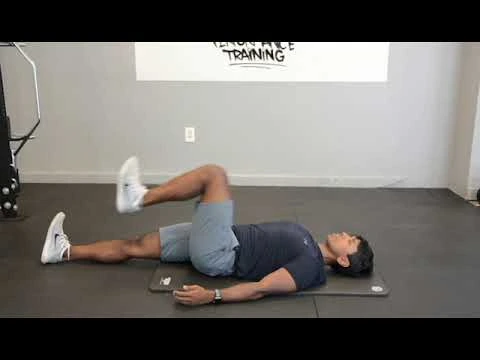
Seated hip march
This is a hip flexor initiation workout. Begin by sitting down on any agreeable surface and keep an erect spine. To maintain the neutral spine position, raise one knee as high as possible and then lower it back down. For the opposite hip, repeat.
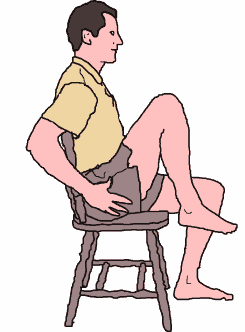
Straight leg raise
This is a bodyweight hip flexor range of the movement workout. To begin, lie on your back. Raise one leg as high as you can while maintaining a straight knee. To bring the leg back to the ground, hold the maximum contraction for up to seven seconds before slowly releasing it. Repeat as necessary.

Psoas sit up
This is a shut chain hip flexor reinforcing exercise. Begin by lying on a bench and hooking your foot through the loop of a kettlebell handle. Use your hip flexor to sit up and hug the other knee to your chest.
Supine kettlebell hip march (easy)
This is an exercise for strengthening the hip flexors. Begin by lying face up on a bench with the target foot hooked to a kettlebell handle. On the other hand, you can lash a free weight to your midfoot. To maintain pelvic stability, use your hands to hold the other knee. Lift the kettlebell until your hips are bent at 90 degrees.
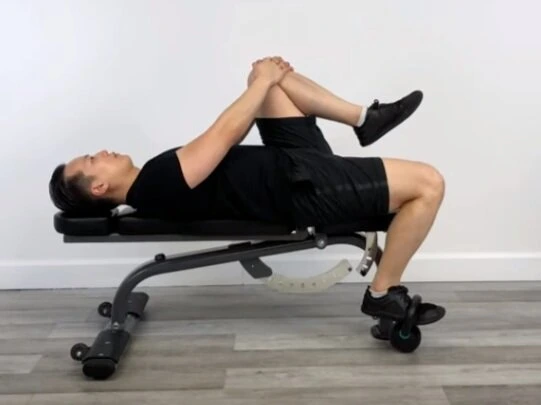
Supine kettlebell hip march (hard)
This is an exercise for strengthening the hip flexors. Begin by lying face up on a bench with the target foot hooked to a kettlebell handle. On the other hand, you can lash a free weight to your midfoot. To maintain pelvic stability, use your hands to hold the other knee. Lift the kettlebell until your hips are in flexion at 90 degrees.
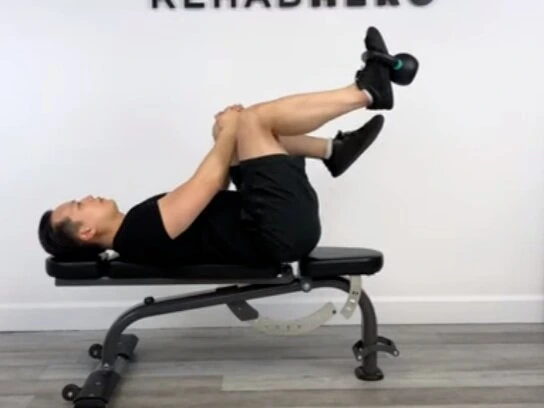
Kettlebell hip march
This is a reinforcing exercise for the hip flexors. Start by inserting your foot into the kettlebell loop. As you lift the weight off the floor, brace your core to maintain a neutral spine. Keep on raising until your knee is essentially hip level and stand firm on this footing for as long as 2 seconds. To finish a repetition, slowly return the weight to the ground.
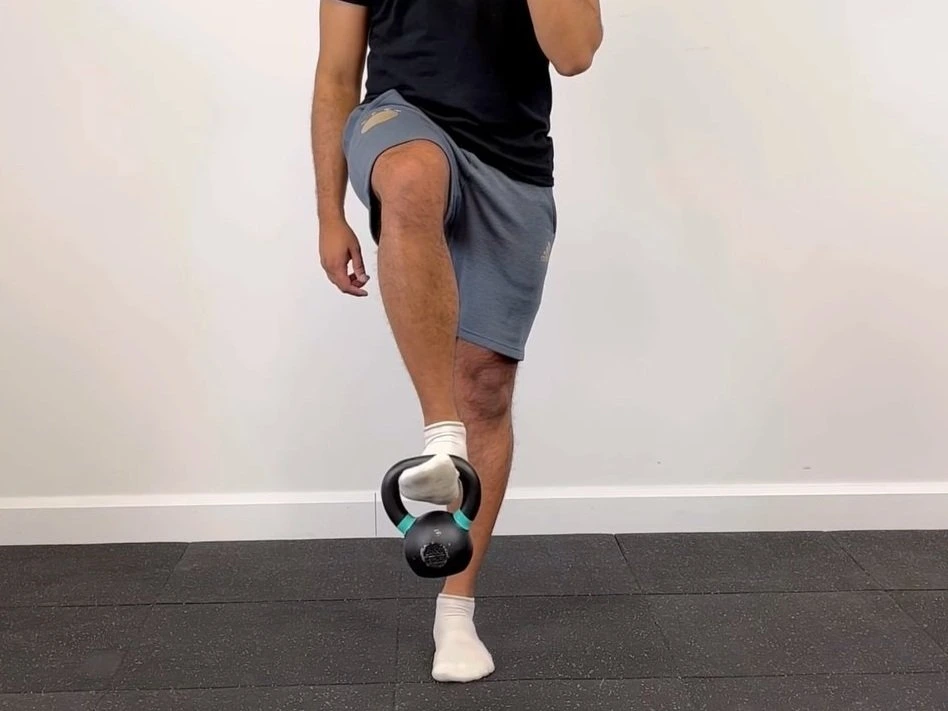
Banded hip march
This is a reinforcing exercise for the hip flexors. Begin by circling one finish of a pull-up help band around your lower leg and circle the opposite end around a steady item behind you. While confronting away from the anchor point, raise the knee to 90 degrees hip flexion. To maintain a neutral spine, brace the core muscle. Before returning to the starting position, maintain hip flexion for up to two seconds.
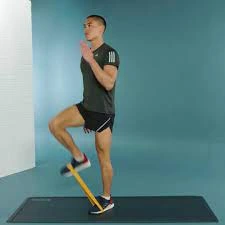
Reverse squat
This is a boosting exercise for the hip flexors. To begin rests on your back with a pull-up help band circled your feet and secured down to a strong item. As you bend your knees and pull them toward your chest, keep your spine neutral and brace your core. Before releasing, maintain the end range position for up to two seconds (at 90 degrees of hip flexion).
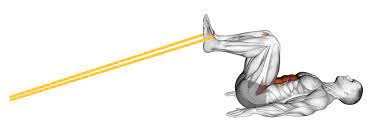
Seated straight leg raise
This is a boosting exercise for the hip flexors. To begin rests on your back with a pull-up help band circled your feet and secured down to a strong item. As you bend your knees and pull them toward your chest, keep your spine neutral and brace your core. Before releasing, maintain the end range position for up to two seconds (at 90 degrees of hip flexion).
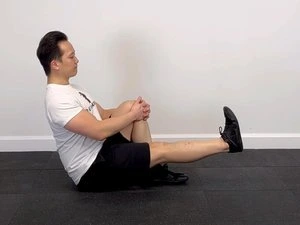
B march
Before going for a run, runners warm up with the b march, a running drill. While raising the opposite arm to 45 degrees of shoulder flexion, raise one knee off the ground to 90 degrees of hip flexion. While lowering the raised arm, keep dropping your foot until your heel comes into contact with the floor. Switch sides and repeat as necessary.
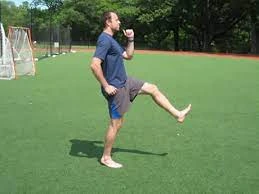
A skip
Before going for a run, skip exercises are used as a warming-up exercise. Start by standing, then alternately raise one knee and the other arm in front of you until hip and shoulder flexion are roughly 90 degrees. Hop on your stance foot and then return to a neutral position by making use of the momentum you gained from raising your limbs. Repeat on both sides for approximately 20-30 seconds or until a warm-up effect is achieved.

Isometric banded standing march
The hip flexors can be strengthened with the isometric banded standing march exercise. Begin by circling a band around both of your feet as you stand. Keep lifting one foot off the ground and remaining in this position for five to ten seconds. Return the foot to its resting position and rest for the same number of seconds. Repeat as necessary.
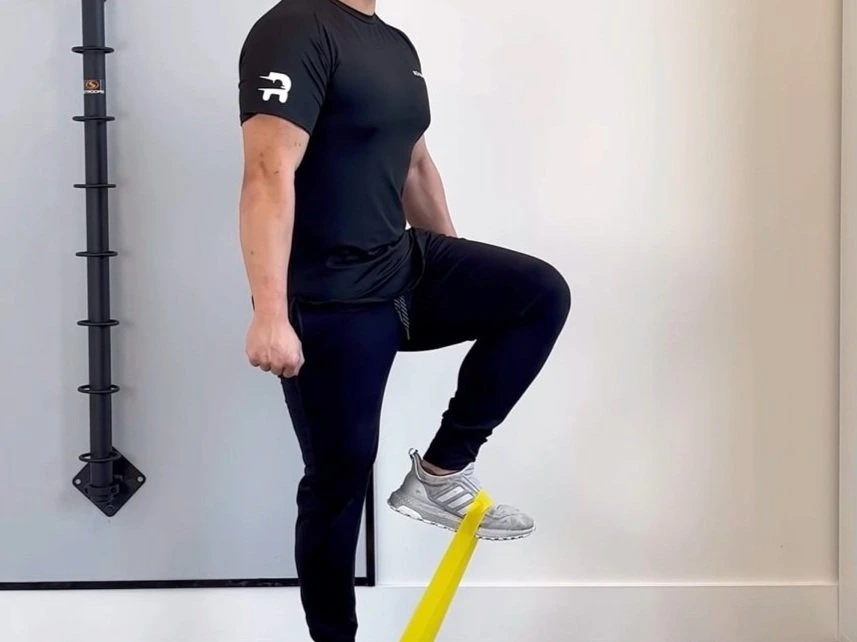
Seated straight-leg hurdles
The hip flexors will benefit from this end-range strengthening exercise. Sit on the ground with the target leg straight in front of you to begin. Alongside your straight legs and foot, place a kettlebell, yoga block, or water bottle in front of you. Twist the non-target leg and embrace it to give strength to your chest area. Raise the affected leg off the floor, over the kettlebell, and back down to the floor while keeping the knee straight. To complete a set, raise the leg up and back over the kettlebell before returning to the starting position.
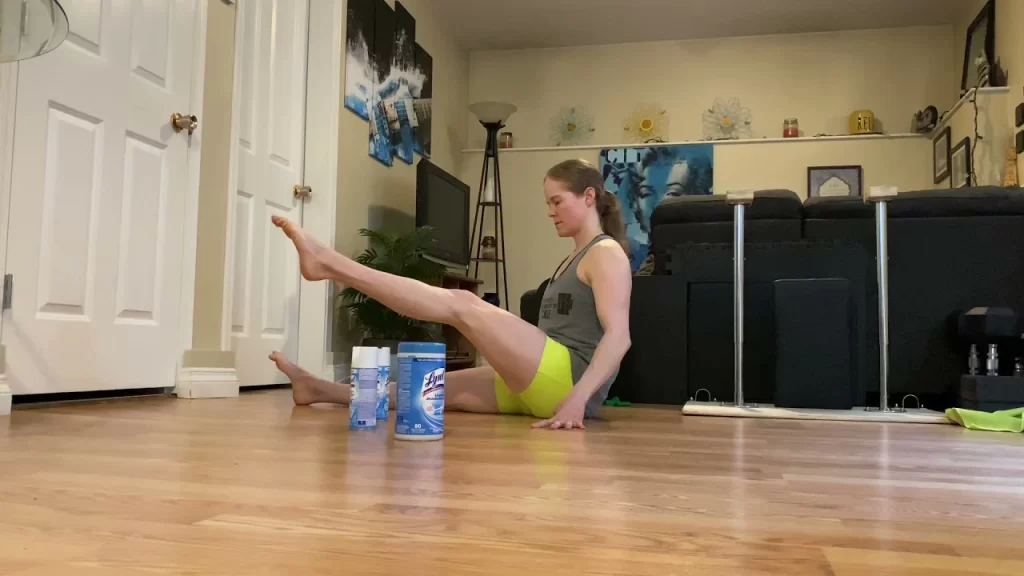
Swiss ball pass
This is an abs-boosting exercise that utilizes a Swiss ball/steadiness ball. To get started, lie on your back and brace your core to keep your spine neutral. With your arms extended overhead and your hips extended, hold the ball in your hands. To transfer the ball from your hands to your feet, flex your hips and lower your arms. To return to a long position, extend your hips once more and raise your arms overhead. In this manner, return the ball to your hands from your feet.
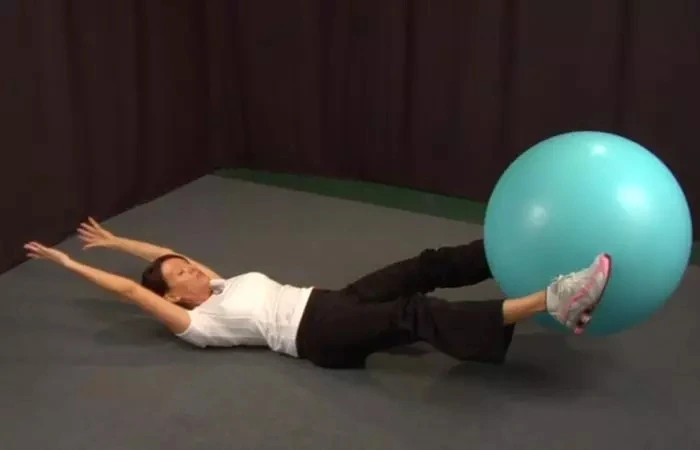
Hip flexor hurdles
The hip flexors will benefit from this end-range strengthening exercise. Sit on the ground with the target leg straight in front of you to begin. Alongside your straight legs and foot, place a kettlebell, yoga block, or water bottle in front of you. Twist the non-target leg and embrace it to give strength to your chest area. Raise the affected leg off the floor, over the kettlebell, and back down to the floor while keeping the knee straight. To complete a set, raise the leg up and back over the kettlebell before returning to the starting position.
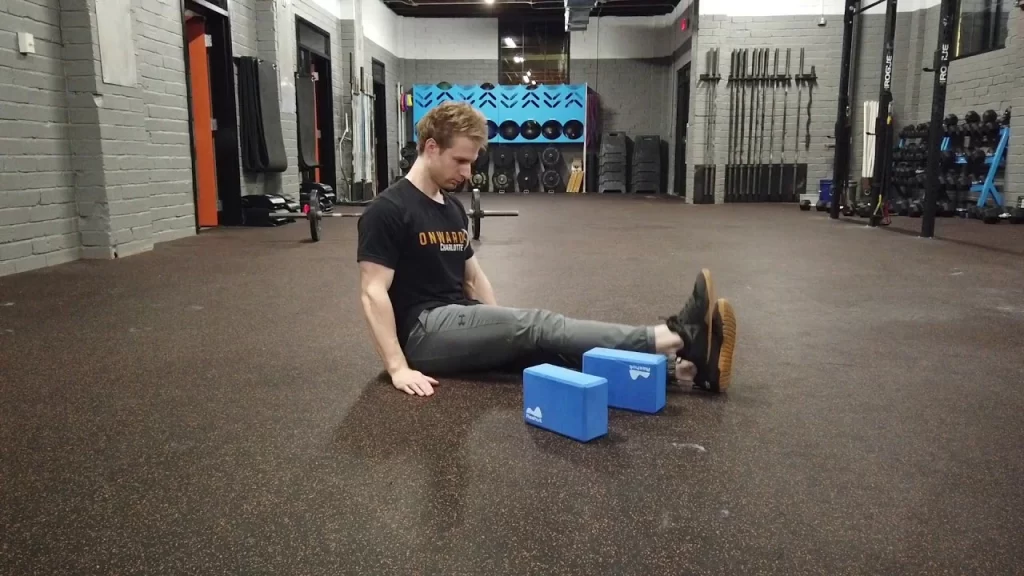
FAQ
Is the major psoas a hip flexor muscle?
Mechanically, the psoas is a hip flexor because it travels anterior to the hip’s flexion/extension axis on its way to the trochanter minor.
What’s the distinction between psoas and hip flexors?
The iliopsoas, also spelled psoas (so-as), is the body’s core muscle and the only muscle that connects the spine to the leg. The psoas is officially classified as a hip flexor. The muscles that keep a joint closed are called flexors. The front of the body contains the major flexors.
How is a psoas major determined?
The examiner passively extends the hip while holding the patient’s right thigh. Alternately, the person is asked to actively bend their right hip against the examiner’s hand while lying on their back. A “positive psoas sign” is if abdominal pain occurs.
Is the psoas muscle visible on an MRI?
MRI or sonography is frequently used to directly image the iliopsoas tendon. While most of the iliacus attaches to the proximal femoral shaft without a tendon, MRI can best show how the psoas tendon attaches to the lesser trochanter of the femur.
Is walking good for the psoas muscle?
Because walking performs both of the following actions, it is a more natural form of exercise for strengthening the psoas: hip flexion and trunk rotation. Running is far better. For those generally looking good, take a stab at pursuing a canine around on the grass, or trail running.

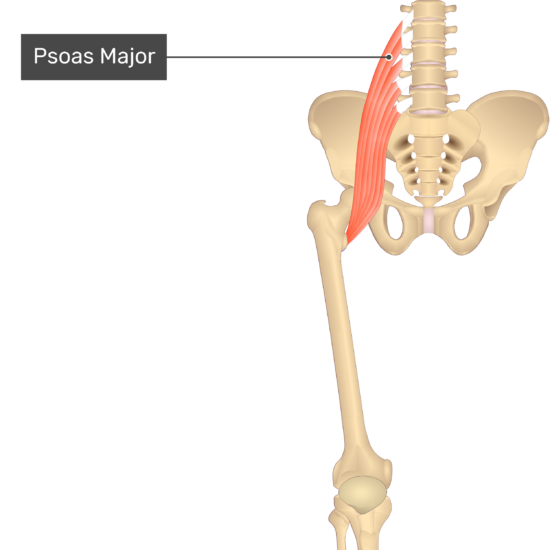


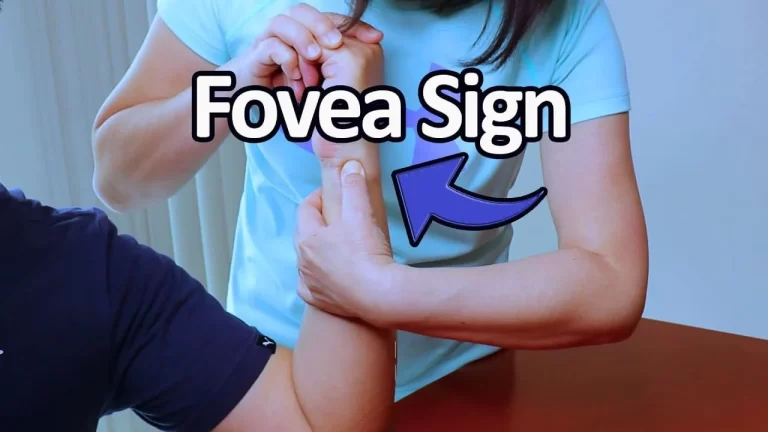
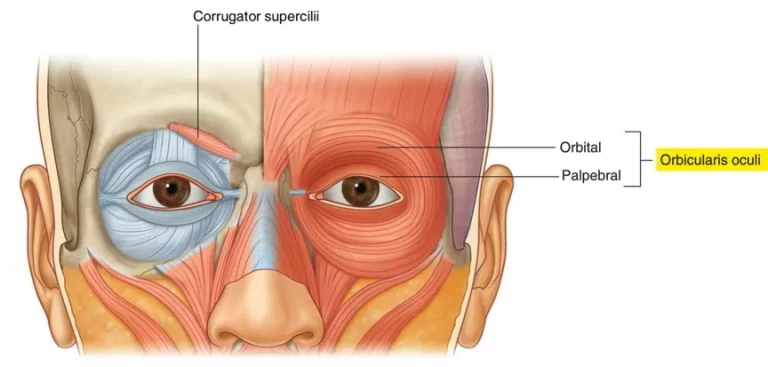
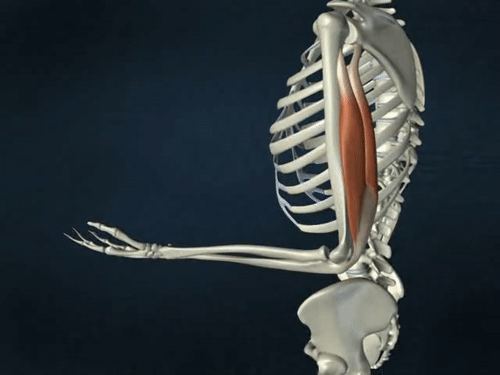

2 Comments